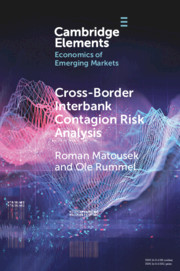Element contents
Cross-Border Interbank Contagion Risk Analysis
Published online by Cambridge University Press: 08 July 2020
Summary
- Type
- Element
- Information
- Online ISBN: 9781108882040Publisher: Cambridge University PressPrint publication: 30 July 2020
References
- 16
- Cited by



